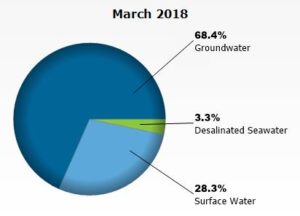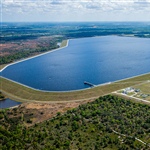 We think of water as something we expect to appear when we turn a faucet, but that is only because of the incredibly complex system behind our simple action. Wells and pumps, reservoirs, and desalination plants work together with massive treatment facilities in a connected network that has taken Tampa Bay Water, the region’s water utility, decades to plan, permit and build.
We think of water as something we expect to appear when we turn a faucet, but that is only because of the incredibly complex system behind our simple action. Wells and pumps, reservoirs, and desalination plants work together with massive treatment facilities in a connected network that has taken Tampa Bay Water, the region’s water utility, decades to plan, permit and build.
With continued growth in the region, Tampa Bay Water is updating its Master Plan, looking at new ways to meet the demand for drinking water over the next 20 years. An online survey at www.futurewater.org asks residents to weigh in on solutions, beginning with a request to rank three priorities – reliability, environmental impact and cost.
“Now is the time to tell us what you think about the options we’re looking at,” said Ken Herd, an engineer specializing in water supply development at Tampa Bay Water. “It’s hard to change anything once a project has been approved by the board and is in design or construction, but now is the time when you can help influence the final outcome.”
The survey will be open through the end of April.

Along with the continued use of groundwater – the least expensive but also the least environmentally sustainable option — Tampa Bay Water is considering the following sources and solutions:
- Expanded use of desalinated water. This is probably the most expensive option because it requires fossil fuels to run desal plants that convert saltwater to fresh. Two options are being considered. One would use cooling water from Duke Energy’s Anclote plant to eliminate the need for another saltwater intake. The second would expand the desal plant at TECO’s Big Bend facility, using either cooling water from the power plant or possibly reclaimed water instead of siphoning additional water from Tampa Bay.
- Direct and indirect aquifer recharge and reuse. Hillsborough County’s Southern Hillsborough Aquifer Reuse near Ruskin will pump highly treated wastewater underground to provide a barrier against saltwater intrusion and concentrate groundwater so it’s easier to pump. The South Hillsborough project. The Tampa Augmentation Project (TAP) would inject highly treated wastewater into the aquifer and then provide additional purification before withdrawing for potable use.
- Withdrawing more water from the Alafia River, which already serves as a significant source through a 15-billion gallon reservoir that stores river water during rainy season for use during dry months.
-

The 15.5-billion gallon C.W. Bill Young Regional Reservoir captures water from the Alafia River during rainy season to be used during hot, dry spring and fall months. Photo courtesy Tampa Bay Water. - Direct reuse of reclaimed water, blended with surface water either before or after treatment at advanced, multi-barrier facilities. New treatment technologies and significantly improved methods of identifying specific contaminants in reclaimed water would be used, Herd said. “We’re seeing contaminants at extremely low concentrations that we had no way to even detect a few years ago. As we gain more information on the effects – if any – of these contaminants, we can create barriers to remove them.”
Although conservation is not identified as a new water source in this master plan, TBW will continue to focus on it, working with local governments to fund programs that replace older plumbing fixtures and ensure that sprinkler systems are working effectively, Herd added.
